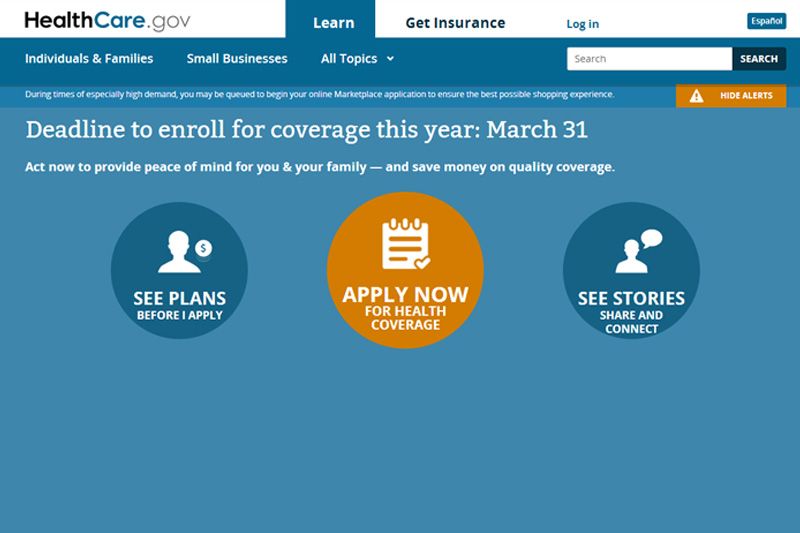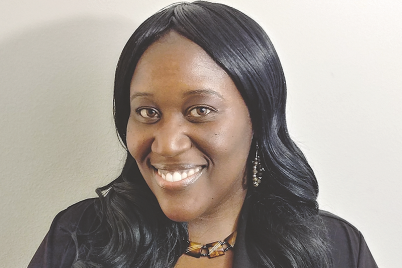Sick of hearing about the health care law?
Plenty of people have tuned out after all the political jabber and website woes. But now is the time to tune back in, before it’s too late.
The big deadline is coming March 31.
By that day, for the first time, nearly everyone in the United States is required to be signed up for health insurance or risk paying a fine.
Here’s what you need to know about this month’s open enrollment countdown:
Already covered? No worries
Most people don’t need to do anything. Even before the health care law passed in 2010, more than 8 out of 10 U.S. residents had coverage, usually through their workplace plans or the government’s Medicare or Medicaid programs. Some have private policies that meet the law’s requirements.
If you’re already covered that way, you meet the law’s requirements.
Since October, about 4 million people have signed up for private plans through the new state and federal marketplaces, the Obama administration says, although it’s not clear how many were already insured elsewhere. In addition, many poor adults now have Medicaid coverage for the first time through expansions of the program in about half the states.
President Barack Obama is urging people who have coverage to help any uninsured friends and relatives get signed up.
Need coverage? It’s crunch time
Chances are you’ll hear more reminders about health care this month. The push is on to reach millions of uninsured people.
The administration, insurers, medical associations and nonprofit groups are teaming up with volunteers to get the word out and guide people through the sometimes-rocky enrollment process. They plan special events at colleges, libraries, churches and work sites.
Singing cats, dogs, parrots – even a goldfish – are promoting the message in TV and online spots from the Ad Council.
A big hurdle for the effort: As recently as last month, three-fourths of the uninsured didn’t know there was a March 31 deadline, according to polling conducted for the Kaiser Family Foundation. Most said they didn’t know much about the law and had an unfavorable opinion of it.
Plus, many worry they won’t be able to afford the new plans.
The enrollment campaign is emphasizing that subsidies are available on a sliding scale to help low-income and middle-class households pay for their insurance.
How to enroll? Start at HealthCare.gov or by calling 1-800-318-2596. Residents of states running their own marketplaces will be directed there; people in other states go through the federal exchange.
After March 31, many people won’t be able to get subsidized coverage this year, even if they become seriously ill.
The next open enrollment period is set to begin Nov. 15, for coverage in 2015.
Deadline details
There are exceptions. The big one is the Medicaid program for the poor. People who meet the requirements can sign up anytime, with no deadline.
Also, people remain eligible for Medicare whenever they turn 65.
If you are insured now and lose your coverage during the year, by getting laid off from your job, for example, you can use an exchange to find a new policy then. People can sign up outside the open enrollment period in special situations such as having a baby or moving to another state.
You can choose to buy insurance outside the marketplaces and still benefit from consumer protections in the law.
People who do that wouldn’t normally be eligible for premium subsidies. But the Obama administration says exceptions will be made for people whose attempts to buy marketplace insurance on time were stymied by continuing problems with some enrollment websites.
Millions of people won’t get covered
Some 12 million people could gain health coverage this year because of the law, if congressional auditors’ predictions don’t prove overly optimistic.
Even so, tens of millions still would go without.
That’s partly because of immigrants in the country illegally; they aren’t eligible for marketplace policies.
Some of the uninsured will not find out about the program in time, will find it confusing or too costly, or will just procrastinate too long. Some feel confident of their health and prefer to risk going uninsured instead of paying premiums. Others are philosophically opposed to participating.
Figuring out just how many of the uninsured got coverage this year won’t be easy because the numbers are fuzzy.
The administration’s enrollment count includes people who already were insured and used the exchanges to find a better deal, or switched from private insurance to Medicaid, or already qualified for Medicaid before the changes.
Some who sign up will end up uninsured anyway, if they fail to pay their premiums. The budget experts predict enrollment will grow in future years and by 2017 some 92 percent of legal residents too young for Medicare will have insurance. But even then, about 30 million people in the United States would go uncovered.
Some are left out
A gap in the law means some low-income workers can’t get help.
The insurance marketplaces weren’t designed to serve people whose low incomes qualify them for expanded Medicaid instead. But some states have declined to expand their Medicaid programs. That means that in those states, many poor people will get left out.
People who fall into the gap won’t be penalized for failing to get covered.
Some others are exempt from the insurance mandate, too: American Indians, those with religious objections, prisoners, immigrants in the country illegally, and people considered too poor to buy coverage even with financial assistance.
The IRS is watching you
The law says people who aren’t covered in 2014 are liable for a fine. That amounts to $95 per uninsured person or approximately 1 percent of income, whichever is higher. The penalty goes up in later years.
A year from now, the Internal Revenue Service will be asking taxpayers filing their forms for proof of insurance coverage. Insurance companies are supposed to provide that documentation to their customers.
If you owe a penalty for being uninsured, the IRS can withhold it from your refund. The agency can’t put people in jail or garnishee wages to get the money. But it can withhold the penalty from a future year’s tax refund.
Need help?
Some insurance companies offer plans that require you to go to a certain provider or hospital. So if you have a certain doctor or physician assistant that you like to go to right now, find out what they take.
Plans can offer other benefits such as vision, dental or medical management programs for those with specific diseases or conditions. Costs depend on your income and family status. Individuals and families falling between 100 percent and 400 percent of the poverty level may qualify for reduced costs through tax credits, which are automatically applied to monthly premiums. These credits could significantly lower insurance costs.
If you need help understanding the different plans or filling the computer application out, Community Health Centers of Pinellas, Inc. has provided several locations where you can get the assistance you need. They recommend making an appointment to avoid waiting in long lines. For setting up an appointment at any of the following sites, or if you have any questions, please call 727-824-8181.
- Community Health Centers of Pinellas at Johnnie Ruth Clarke 1344 22nd St. S.
- Community Health Centers at Bayfront 700 6th St. S.
- Community Health Centers at Pinellas Park 7550 43rd St. N.
- Community Health Centers at Clearwater 707 Druid Rd. East
- Community Health Centers at Largo 12420 130th Ave. N.
- Community Health Centers at Tarpon Springs 247 S. Huey Ave.








